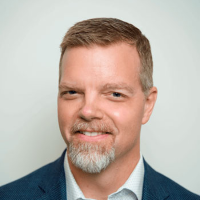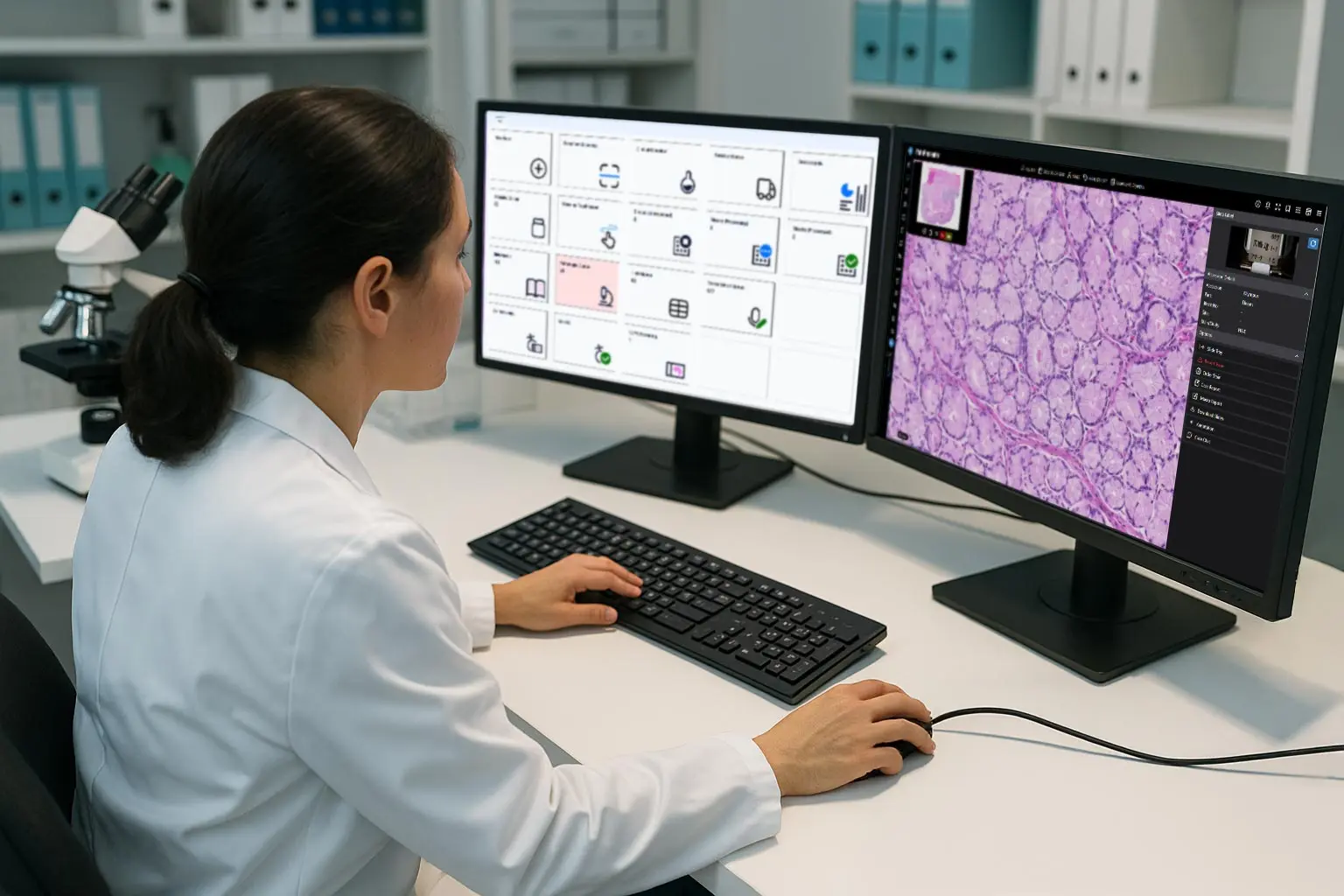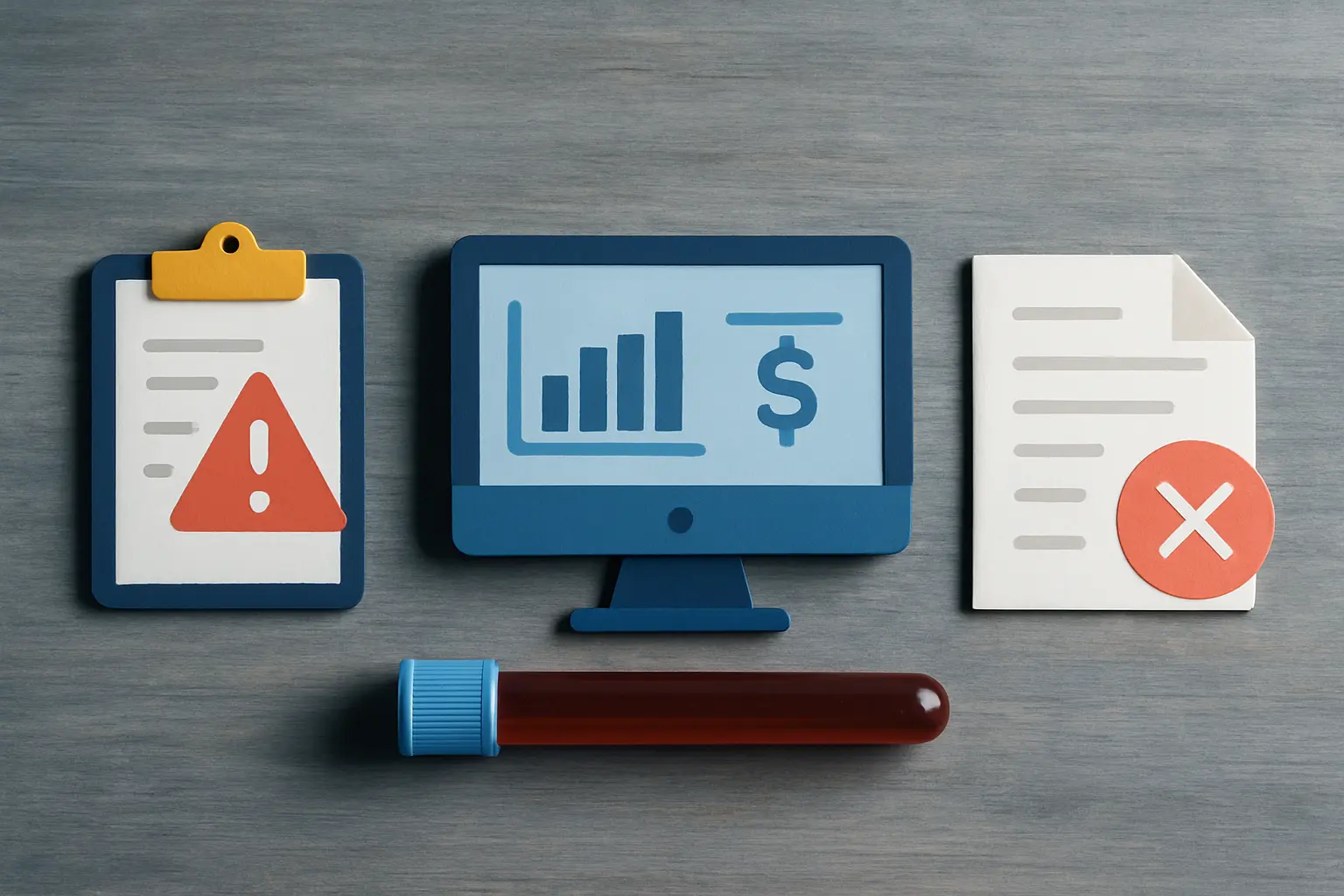Blog
Remembering COVID: LigoLab and Northwest Laboratory Featured on the June 11 COVID-19 Stat Intelligence Briefing
October 31, 2025
Editor’s Note - On May 11, 2023, the World Health Organization declared the official end of the global COVID-19 Public Health Emergency. Although much of the world has moved on, those working in healthcare, and especially within clinical laboratory management and laboratory information systems (LIS) software, must continue to reflect on the hard-earned lessons of the pandemic and remain prepared for future infectious disease threats.
Discover More: End of the Federal COVID-19 Public Health Emergency (PHE) Declaration
At LigoLab, our mission during the pandemic was clear: to support our laboratory partners in every possible way. We responded rapidly with advanced LIS software and direct-to-consumer lab testing solutions designed to meet the unprecedented demands of the crisis. These tools streamlined workflows, safeguarded patient care, and reinforced diagnostic operations in a time of great uncertainty.
What remains most memorable from that period is the resilience and dedication of our laboratory partners. Their remarkable efforts defined a challenging era, and as we reflect on those experiences, we are reminded of the many moments (like the one highlighted here) that continue to demonstrate COVID-19’s lasting impact and the vital role that modern LIS healthcare technology plays in strengthening public health preparedness.
COVID-19 Stat Intelligence Briefing: Featuring LigoLab, Northwest Laboratory, and The Dark Intelligence Group
Below is a recording of an episode of the COVID-19 Stat Intelligence Briefing that originally aired on June 11, 2020. The briefing featured LigoLab CEO Suren Avunjian, Northwest Laboratory COO Jenny Bull, and Robert Michel, Founder and President of the Dark Intelligence Group. An executive summary of the discussion is also available below the recording.
COVID-19 Stat Intelligence Briefing
Moderated by Robert Michel, Founder & President, The Dark Intelligence Group
Speakers: Suren Avunjian, CEO of LigoLab | Jenny Bull, COO of Northwest Laboratory
Moderator Introduction – Robert Michel
Welcome everyone to our COVID-19 Stat Intelligence Briefing series. All attendees are in listen-only mode. For any trouble with computer audio, please dial in using the phone numbers in the control panel. You can also request technical assistance or ask questions through the control panel.
This event is being recorded, and an on-demand link will be emailed to you once final edits are complete.
I’m Robert Michel, Founder and President of The Dark Intelligence Group and publisher of The Dark Report. I’ll start with some breaking news before introducing today’s speakers.
Breaking News
On June 8, 2020, thirty U.S. House Representatives sent a letter to HHS Secretary Alex Azar regarding COVID-19 testing funds. When Congress passed the second COVID-19 funding bill, $25 billion was allocated for “testing.” However, the legislation did not specify that clinical laboratories would receive any portion of those funds.
The letter emphasized that:
- Clinical labs have made significant investments in COVID-19 testing despite losing 40–60% of their regular test volume during lockdowns.
- Federal funds have not been specifically designated for these labs.
- HHS should allocate funding to support labs with resources for platforms, reagents, swabs, PPE, staffing, and overtime pay.
This funding would enable labs to continue scaling up diagnostic and antibody testing, especially for healthcare workers, first responders, and other high-risk groups.
You can find the full letter on the American Clinical Laboratory Association’s website. If your congressional representative signed it, I encourage you to reach out and express your support.
Topic Introduction
Today’s topic is how the Florida Department of Health partnered with Northwest Laboratory and the LigoLab-powered TestDirectly direct-to-consumer lab testing portal to conduct statewide testing of long-term care residents and staff.
Our speakers are:
Suren Avunjian, CEO of LigoLab. The company is widely known for its laboratory information system technology platform, the LigoLab Medical LIS & Lab RCM Informatics Platform.
Jenny Bull, COO of Northwest Pathology/Northwest Laboratory in Bellingham, Washington. The full-service lab operation is a leading provider of diagnostic testing.
Presentation – Suren Avunjian
Thank you, Robert. LigoLab has supported over 100 laboratories nationwide for the past 14 years. Toward the end of 2019, Jenny and I began developing a direct-to-consumer lab testing platform. When COVID-19 hit, we accelerated development and deployed the system in April 2020.
Today, TestDirectly is live in Florida, Illinois, Colorado, Washington, and additional states.
The Florida project began on May 19, 2020, when the Trump administration challenged all states to test every resident and staff member in long-term care facilities. The Florida Department of Health contacted us the next day. Within one week, we had configured the platform to support half a million individuals across 4,000 facilities in 67 counties.
Our teams worked around the clock to make this possible, recognizing that protecting nursing home residents, one of the most vulnerable populations, was critical. Although long-term care facilities accounted for just 11% of cases, they represented more than 75% of COVID-19 fatalities.
How It Works:
Florida deployed 100 staff across the state, collecting 10,000 samples per day.
The TestDirectly web portal allowed nursing staff to self-register and administrators to order tests for residents.
The system eliminated paperwork, reduced errors, and enabled real-time result tracking by the Florida Department of Health.
Results were transmitted to the Northwest LIS system and made available in TestDirectly within minutes.
The platform integrates bi-directionally with all laboratory information systems, connecting patients, agencies, collection centers, laboratories, and physicians while minimizing human error and delays.
Presentation – Jennifer Bull
Thank you, Suren. The Florida initiative was ambitious. On the first day, we received 329 boxes of specimens, thousands of samples at once. Even with workflow efficiencies, it was overwhelming.
LigoLab helped us develop batch scanning and barcoding tools that simplified accessioning and minimized manual data entry, enabling specimens to go directly to PCR testing.
Workflow Improvements:
- Barcoded requisitions enabled rapid specimen tracking.
- Automated data entry minimized errors and sped up turnaround.
Once PCR results were verified, results were sent directly to patients and facilities through TestDirectly, typically within 2–3 days.
To date, more than 130,000 orders have been processed through the platform. Florida health officials can view results in real-time, segmented by demographics and location. This transparency has been invaluable.
Q&A Highlights
Expansion beyond COVID-19? Yes, the platform was built to support all lab tests, including direct-to-consumer and employer-based testing.
What’s the requisition process? Facilities can use either paper requisitions or the TestDirectly portal, which generates barcoded orders for faster processing.
What type of instrumentation? We use Thermo Fisher KingFisher extraction instruments and 7500DX PCR systems, supported by automation for pipetting and capping.
Where did the funding come from? Florida covers the cost through its agreement with LigoLab and Northwest Laboratory.
Lessons Learned
Early vendor partnerships, strong technology support, and breaking down processes into parallel workflows were key to success. We also hired 150 additional staff in six weeks to manage the surge in volume.
Closing Remarks
Testing long-term care residents and staff was critical to protecting one of the highest-risk populations. This project demonstrated the importance of scalable technology, strong partnerships, and rapid innovation during a public health crisis.
Thank you to Suren Avunjian and Jenny Bull for sharing their experience, and to all attendees for joining today’s briefing.






